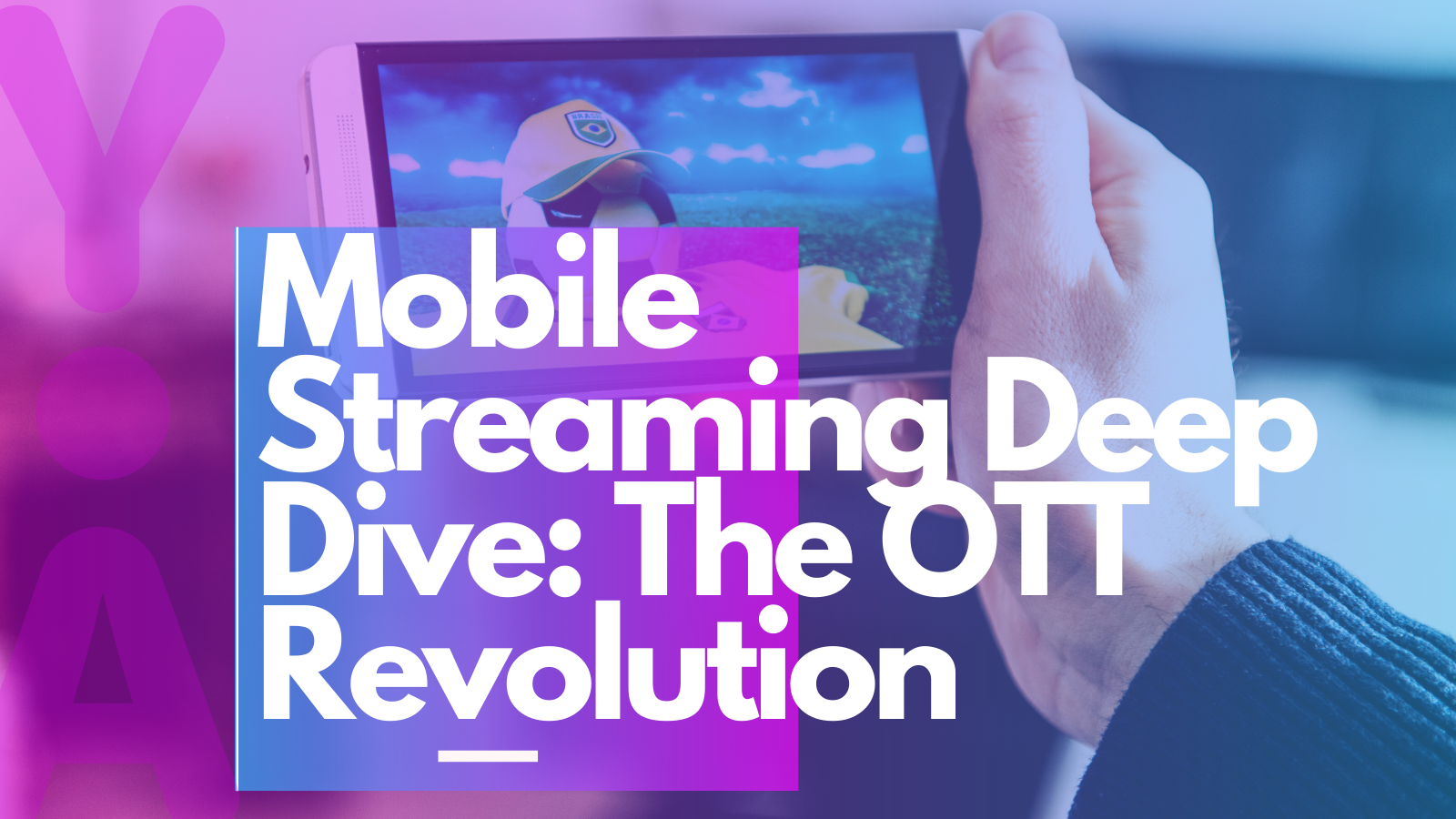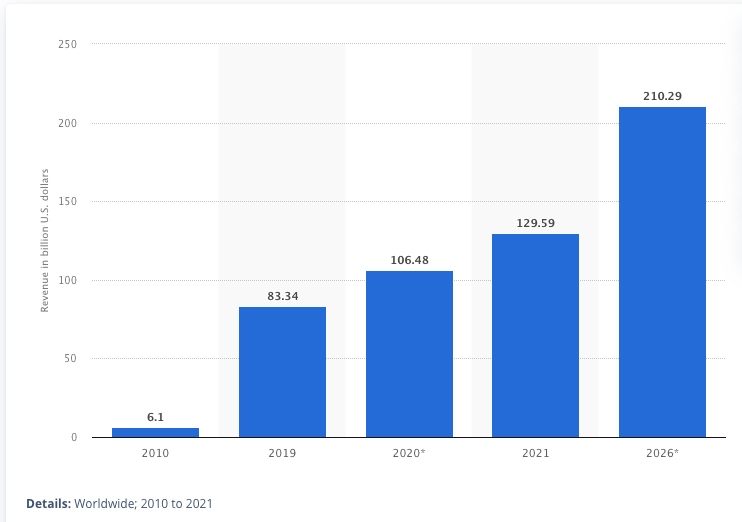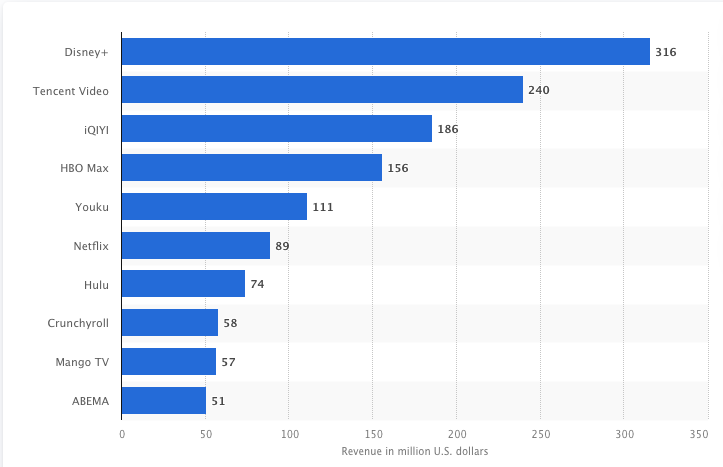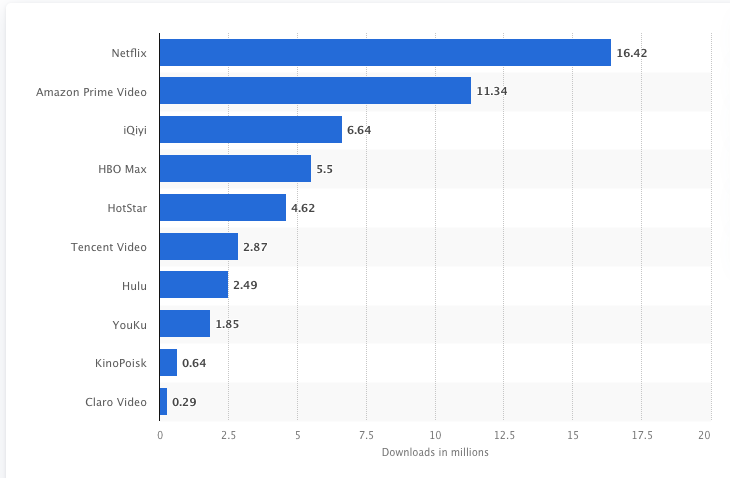Introducing installment three in our Vertical Deep Dive Series, where we examine the inception, growth and decline points, and other major trends in each of the top verticals in mobile, such as mobile streaming trends. In our latest feature, we'll explore the success of OTT and specifically how it was transformed by mobile streaming trends in recent years. We'll begin with the inception of OTT, OTT trends, and discuss how the smartphone and on-the-go lifestyle have driven the growth of mobile streaming.
In recent years, more people than ever have begun “cord-cutting” in the movement toward Over-The-Top (OTT) streaming. OTT mobile apps deliver video content to smartphones using the internet rather than more traditional distribution channels, like cable or satellite. With OTT, mobile users can instantly stream video content on their mobile devices. In a world where people are constantly on-the-go, it is no wonder they would prefer to stream video content on their cordless devices rather than be tied to a cable box. As such, the phenomenon of canceling cable subscriptions in favor of adopting streaming ones has swept the world, and the increasing trend of OTT and mobile streaming, in particular, has just begun.
The Rise of OTT in Mobile Streaming
This history behind the OTT phenomenon is a rich one, and if there is one streaming player that is practically synonymous with the revolution, it’s Netflix. In 2007, Netflix expanded its initial subscription-based DVD rental business and launched its streaming service. Just one year later, the iPhone App Store was launched and by 2010, Netflix launched its first mobile application on both iPhone and Android. Despite initial challenges, particularly around increasing data consumption and decreasing battery levels, the convenience of being able to stream movies on-the-go seemed to outweigh any costs.
Interestingly enough, the Netflix app wasn’t officially released until after AT&T stopped offering iPhones with unlimited data plans in June, 2010, though these were later revived in 2016. With new iOS wireless-bandwidth caps in place, the iPhone was deemed safe for streaming and the Netflix app was released in August of the same year. These events coalesced and led to what many consider the initial rise in mobile streaming, and OTT, a movement that may soon surpass other streaming mechanisms.
Current OTT Trends in Mobile Streaming
Today, the number of popular OTT services have grown, making Netflix one of many streaming services that have dominated the mobile streaming space. Other top mobile streaming competitors include Disney+, Prime Video, Hulu, HBO Max, and Youtube. More OTT competitors are hitting the market as the global OTT devices and services market is expected to reach $210 billion in revenue by 2026, up from $129.59 billion in 2021.
Source: Statista
Disney+ has been leading the trends in the OTT space as the highest grossing video entertainment mobile app worldwide in the first three quarters of 2021. During this period, the Disney+ platform generated more than $300 million. The Chinese video streaming app, Tencent Video, ranked second with $240 million in revenue generated. Netflix ranked in seventh place with $89 million generated in revenue, behind HBO Max which ranked fourth and ahead of Hulu which ranked eighth.
Source: Statista
Though Netflix fell behind Disney+ and other streaming services in revenue during the first three quarters of 2021, Netflix led in numbers of downloads worldwide in June 2021 with 16.42 million downloads. In second place was Amazon Prime Video with 11.34 million downloads. Meanwhile, Tencent Video which ranked first in revenue generated during this time fell to sixth place in number of downloads in June 2021 with 2.87 million downloads.
Source: Statista
With the OTT trend growing at a quick rate, and old and new players alike dominating the mobile streaming space, the future impacts on mobile marketing will be significant.
The Future of Mobile Streaming & OTT Trends
Mobile streaming is an important component of the trending OTT landscape. There is no doubt that the OTT ecosystem is changing rapidly, and mobile marketers will need to adapt. Privacy changes which hit mobile in 2021 will extend toward OTT, requiring a “future-proofing strategy” to be top of mind for mobile marketers.
Meanwhile, mobile marketers can focus their efforts on OTT video advertising, which is set to reach ad revenues of $119 billion by 2023, accounting for 51% of all OTT revenues. There is vast opportunity for the mobile video ad space as OTT brings tools, such as DSP’s, to channels that were once unable to measure or target user engagement. While cable channels could have difficulty measuring how many viewers were engaged with their advertisements, today’s mobile attribution technology can more accurately track user engagement on mobile devices.
Current mobile marketing technology also enables advertisers to segment users more effectively. Mobile marketers can segment users based on their favorite genres, average session length, or even subscription type. User segmentation is a critical part of any mobile retargeting strategy, which can re-engage users with streaming apps, cutting through the growing competition in trending OTT services.
Takeaways on OTT Trends:
The rise in OTT streaming has led to the cultural phenomenon of “cord-cutting” as mobile users adoptadopting an on-the-go lifestyle watch streaming services on their mobile devices rather than traditional cable channels. As the OTT space continues to grow, mobile marketers find themselves at the forefront of a new channel for re-engaging users.
- The Rise of OTT in Mobile Streaming: With the launch of the Netflix app on iPhones in 2008, OTT streaming services hit mobile devices, allowing smartphone users to stream movies on-the-go.
- Current Trends in Mobile Streaming: The global OTT devices and services market is expected to reach $210 billion in revenue by 2026, up from $129.59 billion in 2021. The OTT trend continues growing at a quick pace with both old and new players dominating the mobile streaming market.
- The Future of Mobile Streaming: The OTT landscape is changing rapidly, which will impact mobile marketers as they face privacy challenges and work to future-proof their re-engagement strategies. Luckily, mobile marketing technology enables marketers to segment users, accurately track engagement, and retarget mobile users more effectively.
Take advantage of the rise in mobile streaming and increasing OTT trends by re-engaging users with effective mobile retargeting strategies. Contact us now to get started!





